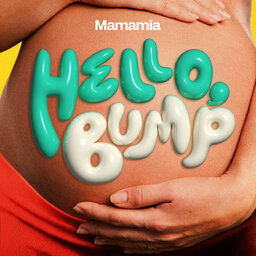Week 39: How Will I Know If I'm Actually In Labour?
Welcome to Hello Bump, a podcast about what you’re not expecting when you’re expecting.
In this episode, hosts Jana Pittman and Grace Rouvray discover your baby is…big! At week 39, your cervix is thinning out and you’ll likely be getting more discharge and maybe even contractions. Grace asks Jana all the nitty gritty questions about placentas and preparing your animals for the arrival of your baby. Plus, Jana explains what a silent labour is.
THE END BITS:
Discover more Mamamia podcasts here.
Email us: podcast@mamamia.com.au
Share your story or feedback. Send us a voice message, and one of our podcast producers will get back to you ASAP.
Are you a mum of a child aged 5 years or under? Are you expecting a little one? We want to hear from you! Complete our survey now for a chance to win a $1,000 gift voucher in our quarterly draw!
CREDITS:
Hosts: Jana Pittman and Grace Rouvray
Executive Producer: Courtney Ammenhauser
Audio Production: Jacob Round
Mamamia acknowledges the Traditional Owners of the Land we have recorded this podcast on, the Gadigal people of the Eora Nation. We pay our respects to their Elders past and present, and extend that respect to all Aboriginal and Torres Strait Islander cultures.
 Hello Bump
Hello Bump


